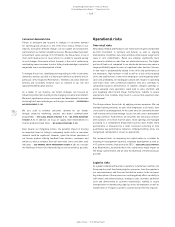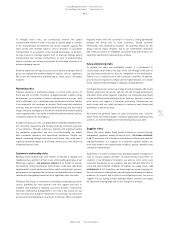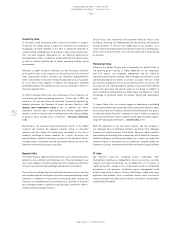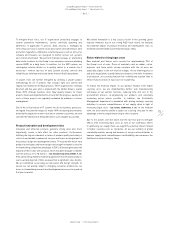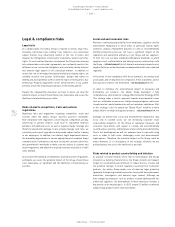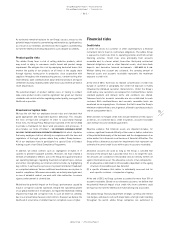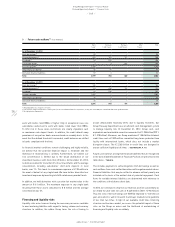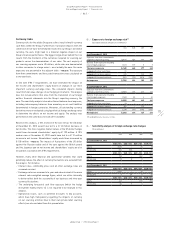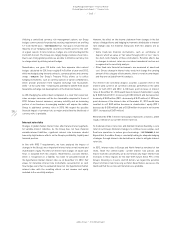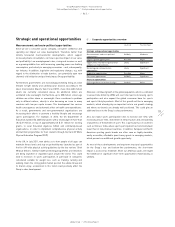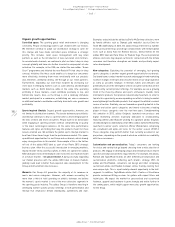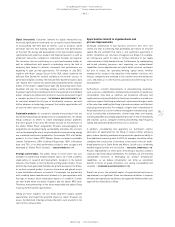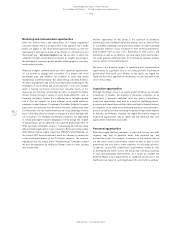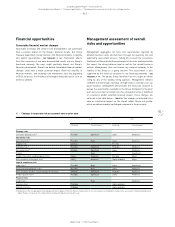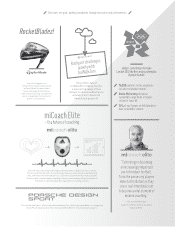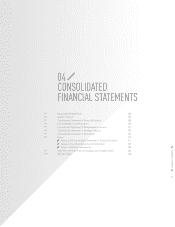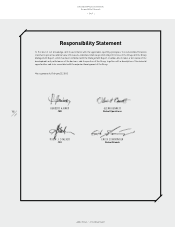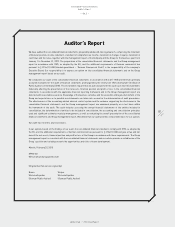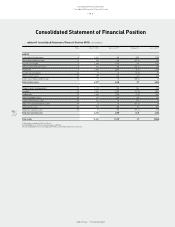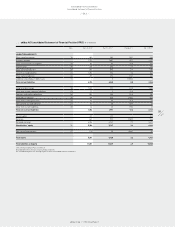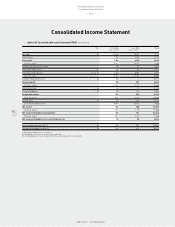Reebok 2012 Annual Report Download - page 202
Download and view the complete annual report
Please find page 202 of the 2012 Reebok annual report below. You can navigate through the pages in the report by either clicking on the pages listed below, or by using the keyword search tool below to find specific information within the annual report.
adidas Group
/
2012 Annual Report
Group Management Report – Financial Review
180
2012
/
03.5
/
Risk and Opportunity Report
/
Strategic and operational opportunities
Organic growth opportunities
Controlled space: The sporting goods retail environment is changing
constantly. People increasingly want to get involved with our brands.
We therefore continue to adapt our distribution strategy to cater for
this change and have made controlled space initiatives a strategic
priority. This includes retail space management with key retail
partners as well as the introduction of new own-retail store formats.
In our wholesale channels, we continue to pilot our latest shop-in-shop
concepts globally and have also further invested in unique point-of-sale
activation. For example, in the USA, we started the new adidas “Home
Court” programme and initiated the new Reebok Fit Hub shop-in-shop
concept. Initiatives like these could enable us to target our consumers
more effectively, involving them more emotionally with our products
and, therefore, ultimately driving sell-through at our retail partners.
Furthermore, expanding our own-retail footprint by increasing our
store base in emerging markets such as Latin America and developed
markets such as North America, while at the same time operating
profitably in these markets, could contribute positively to top- and
bottom-line results. Also, as the Group is still a relatively immature
market participant in e-commerce, establishing our own e-commerce
in additional markets worldwide could help drive both sales growth and
profitability.
Sports-inspired lifestyle: Organic growth opportunities, however, are
not limited to distribution channels. The border between pure athletics
and lifestyle continues to blur as sport becomes a more integral part in
the lives of more and more consumers. People want to be fashionable
when engaging in sporting activities without compromising on quality
or the latest technological advances. At the same time, performance
features and styles are finding their way into products meant for more
leisure-oriented use. We estimate the global sports lifestyle market to
be at least three times larger than the performance market. This opens
up additional opportunities for our Group and our brands, which already
enjoy strong positions in this market. One example of this is the further
roll-out of the adidas NEO label as part of our Route 2015 strategic
business plan. After the successful introduction in emerging markets,
mainly Greater China and Russia/CIS, in 2012, we opened ten adidas
NEO label pilot stores in Germany in order to test this fast-fashion model
in a mature market
/
SEE ADIDAS STRATEGY, P. 82 Successfully expanding
our market presence with the adidas NEO label in mature markets
globally could lead to better than expected sales development for the
Group and drive bottom-line increases.
Women’s: Our Group still generates the majority of its revenues in
men’s and unisex categories. However, with women accounting for
more than a third of total spending on athletic footwear, we believe
the women’s sports market is one of the most attractive segments in
the sporting goods industry. The adidas Group is therefore investing in
developing women-specific product offerings in both performance and
lifestyle that emphasise female individuality, authenticity and style.
Examples today include the adidas by Stella McCartney collection, worn
by female athletes such as Olympic gold medallist Jessica Ennis for
Team GB. Additionally, in 2012, the adidas Group entered into a number
of exclusive partnerships and design collaborations with female global
icons such as Alicia Keys for Reebok Classics, Selina Gomez for the
adidas NEO label and Tara Stiles for Reebok Yoga. These inspirational
athletes and icons may deepen our brands’ connection with the female
consumer and therefore strengthen our brands and positively impact
sales development.
New categories: Exploiting the potential of emerging, fast-growing
sports categories is another organic growth opportunity for our brands.
Our brand teams conduct market research and engage in trend marketing
to detect changes in lifestyle and consumer needs of our target audience
as early as possible. Changes in lifestyle, habits and attitudes can
potentially result in the emergence of new consumer needs that are not
addressed by current product offerings. For example, we see a growing
trend in the move by athletes and sports enthusiasts towards more
minimalistic products that promote natural body movement. In order to
tap into this opportunity, we are expanding our efforts to bring to market
more lightweight and flexible products that support the athlete’s natural
course of motion. Similarly, we see tremendous growth potential in the
outdoor and action sports categories and intend to become a leading
player in these categories over the next few years. Complementing
this ambition in 2012, adidas Originals launched new products and
digital marketing activities especially dedicated to snowboarding,
featuring athlete Jake Blauvelt wearing his signature adidas Originals
snowboarding boot. Additionally, in fall 2012, adidas by Stella McCartney
launched its winter sports collection, Winter Wonderland, comprising
ski, snowboard and après-ski looks for the winter season 2012/13.
These categories may perform better than currently assumed in our
projections, depending on the speed at which we establish our credibility
with these consumers.
Customisation and personalisation: Today’s consumers are looking
for choice and variety that go beyond choosing from a wide selection of
products. We engage in developing unique and relevant products that fit
specific functional and aesthetic requirements. For example, the adidas,
Reebok and TaylorMade brands all offer different personalisation and
customisation platforms reflecting each brand’s strategy. With mi
adidas and YourReebok, consumers can design and order completely
customised adidas and Reebok footwear online, thereby creating their
own unique style. This is a particularly relevant opportunity in the kids’
segment. In addition, TaylorMade-adidas Golf’s Centres of Excellence
provide customised fitting sessions for golfers with expert fitters and
technicians. We expect the market for personalised and customised
footwear, apparel and hardware to grow strongly and evolve further in
the coming years, which might support new sales growth opportunities
for the Group.


